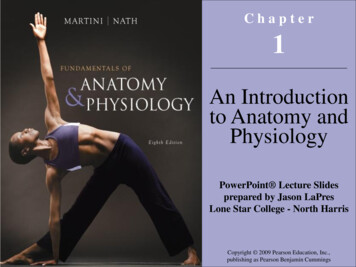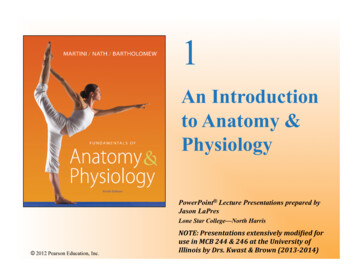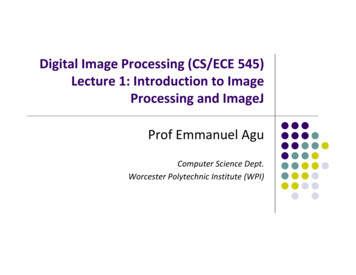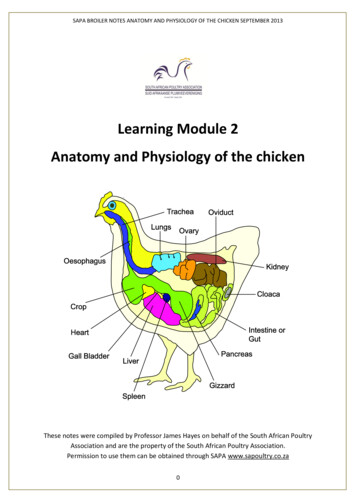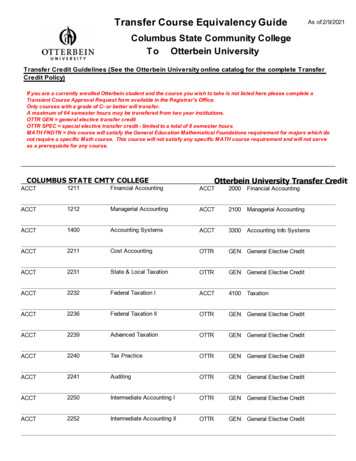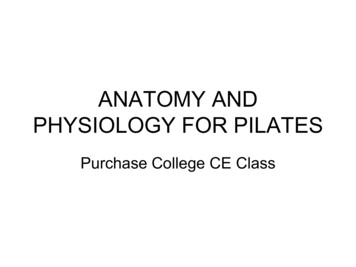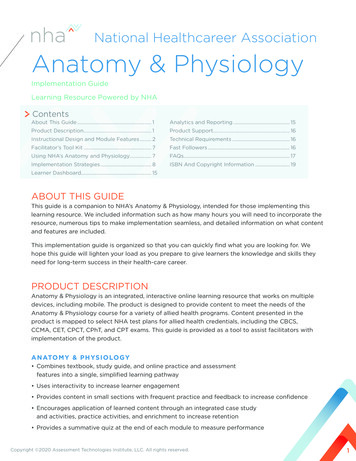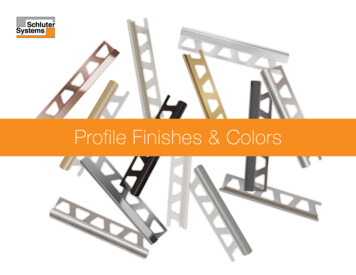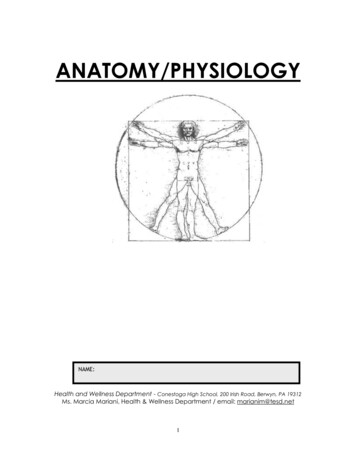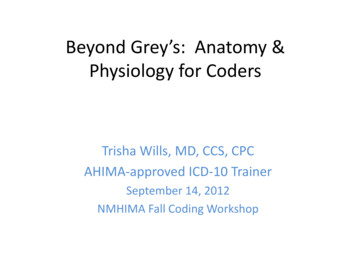
Transcription
Beyond Grey’s: Anatomy &Physiology for CodersTrisha Wills, MD, CCS, CPCAHIMA‐approved ICD‐10 TrainerSeptember 14, 2012NMHIMA Fall Coding Workshop
DisclaimerThe views and opinions expressed and writtenare those of the presenter and in no wayrepresent Presbyterian Healthcare Services orany of its employees.2
Courtesy: ABC3
Objectives Review and understand anatomical positionand directional terms of the body Review A & P and coding of select clinicalcases in musculoskeletal system Review A & P and coding of clinical case indigestive system Review A & P of laparoscopic hysterectomy inregard to Coding Clinic, First Qtr. 2012, pgs.3‐44
Resources/Tools Chabner, D. (2007). The Language of Medicine(8th ed.). St. Louis, Missouri: Saunders –Elsevier. AMA (2011). Advanced Anatomy andPhysiology for ICD‐10‐CM/PCS. Salt Lake City,Utah: Contexo Media OptumInsight. (2012). ICD‐9‐CM. Netter, Frank H., M.D. (2011). Atlas of HumanAnatomy (5th ed.). Philadelphia, PA: Saunders– Elsevier.5
Resources/Tools lm.nih.gov/medlinepluswww.umm.eduwww.webmd.com6
Resources/Tools There’s an app for that – Human Anatomy! By SusaSoftX from iTunes AppStore7
Positional and Directional Terms ‐ 1 Anatomical position – that of human bodystanding erect with palms turned forward,used as the position of reference indesignating the site or direction of structuresof the body Terminology:– Anterior (ventral): front surface– Posterior (dorsal): back side, Ex: dorsal fin8
Positional and Directional Terms ‐2– Deep: Away from the surface– Superficial: On the surface. E.g., superficialveins can be viewed through the skin– Proximal: Near the point of attachment tothe trunk or near the beginning of thestructure.– Distal: Far from the point of attachment tothe trunk or far from beginning of structure9
Positional and Directional Terms ‐ 3– Superior: Above another structure. Cephalicpertaining to head. Also supra.– Inferior: Below another structure. Caudal alsomeans tail, or away from head or below (infra)– Medial: Pertaining to the middle or nearer themedial plane of the body– Lateral: Pertaining to the side– Supine: Lying on the back. Supine is on the spine.– Prone: Lying on the stomach.10
Positional and Directional Terms ‐ 4– Palmar: referring to palm of hand– Plantar: relating to sole of foot– Abduction: Away from midline of body– Adduction: Toward midline of body– Circumduction: Movement of extremity in circulardirection– Ball and socket joint: Multiaxial synovial joint inwhich sphere of head of one bone fits intorounded cavity of another joint. Ex: hip, shoulder11
Planes of the Body Frontal (coronal): Vertical plane dividing thebody into anterior and posterior positions Sagittal (lateral): Lengthwise vertical planedividing the body into right and left sides. Themidsagittal plane divides the body into rightand left halves. Transverse (cross‐sectional or axial):Horizontal plane running across the bodyparallel to the ground. Ex: CT scan12
Image of Planes of BodyCourtesy: medical‐dictionary.thefreedictionary.com13
Dr. Owen HuntCourtesy: ABC14
Dr. Callie TorresCourtesy: ABC15
Case history #1Dr. Owen Hunt, 42 y. o. male, c/o of pain andtingling in his right hand; it is worse at night.Symptoms relieved by rest and ice. Pt. is atrauma surgeon and pain worse after longsurgeries and typing.16
Carpal Tunnel Syndrome A complex of symptoms resulting fromcompression of the median nerve. Symptomsinclude pain, burning, and tinglingparesthesias in fingers and hand. Compression of median nerve as it passesunder flexor retinaculum. Pain or paresthesia felt in lateral 3 ½ digits.17
Carpal Tunnel SyndromeCourtesy: A.D.A.M., Inc.18
Carpal Tunnel SyndromeCourtesy: A.D.A.M., Inc.19
Carpal Tunnel ReleaseCourtesy: A.D.A.M., Inc.20
Code carpal tunnel release ICD‐9‐CM: 04.43 ICD‐10‐PCS: 01N50ZZ (right)21
Radius and UlnaCourtesy: daviddarling.info22
Interosseus LigamentCourtesy: medical‐dictionary.thefreedictionary.com23
Bones of wrist and hand24
Case history # 2Dr. Owen Hunt, 42 y. o. male, trauma surgeon, isthe pitcher for the Seattle Grace Hospitalbaseball team. He presents with progressive,chronic pain and weakness of his left shoulderjoint. Results of MRI are indicative of adegenerative partial rotator cuff tear involvingthe supraspinatus tendon.25
Rotator cuff Four muscles and several tendons that controlrotation of the shoulder– Supraspinatus– Infraspinatus– Teres minor– Subscapularis Acronym ‐ SITS26
Muscles of the rotator cuffCourtesy: jonespainrelief.com27
Courtesy: aidmyrotatorcuff.com28
Code Partial Tear of Rotator Cuff ICD‐9‐CM: 726.13 excludes complete(nontraumatic) rupture of rotator cuff(727.61) ICD‐10‐CM: M75.100 (left)29
Musculoskeletal Terminology Origin – the more proximal, fixed end orattachment of a muscle Insertion – the place of attachment of muscleto the bone it moves Tendon – fibrous cord of connective tissue bywhich a muscle is attached to bone Ligament – band of tissue that connects boneto bone30
Sprains vs. StrainsSprain – a stretched or torn ligamentLigament – band of tissue that connects bone toboneStrain – a stretched or torn muscle or tendonTendon – fibrous cord of connective tissue by whicha muscle is attached to bone31
Dr. Mark SloanCourtesy: ABC32
Dr. Derek ShepherdCourtesy: ABC33
Case history #3Dr. Mark Sloan, 44 y.o. male, presents withexcruciating pain in his right knee. Dr. Sloan isthe quarterback of the Seattle Grace footballteam. During the championship game withMercy West, he was tackled from the front byDr. Derek Shepherd. He is unable to bearweight on right leg.34
Knee normal anatomyCourtesy: A.D.A.M., Inc.35
Knee joint Distal end of femur (femoral condyles) andproximal end of tibia (tibial plateau). Thefemoral condyles usually glide smoothly onthe tibial plateau. Hinge joint36
Case history #3 (cont.)Dr. Torres examined Dr. Sloan and tested for theanterior drawer sign. This was positive. AnMRI revealed a torn anterior cruciate ligamentand he was scheduled for surgery.37
Torn ACLCourtesy: A.D.A.M., Inc.38
Anterior drawer signCourtesy: tabers.com39
Tears of meniscusCourtesy: so.com.au40
Code ACL tear ICD‐9‐CM: 844.2 ICD‐10‐CM: S83.519A (right)41
Dr. Miranda BaileyCourtesy: ABC42
Dr. Richard WebberCourtesy: ABC43
Case history #4 Dr. Miranda Bailey, 39 y.o. female, is seen byDr. Richard Webber, general surgeon. Pt. c/opain in the RUQ, especially after eating a fattymeal. Pain associated with N/V. Dr. Webberorders U/S. U/S results: Positive Murphy’s sign. Stones ingallbladder. Thickened gallbladder wall. Dx:Acute cholecystitis with cholelithisasis.44
Courtesy: medicinenet.com45
GallbladderPear‐shapedLies under liverSecretes bile, which helps digest fatBile released through common bile duct (CBD)into duodenum Can live without 46
GallbladderCourtesy: umm.edu and A.D.A.M., Inc.47
Cholelithiasis Pain typically comes and goes (biliary colic) Secondary inflammation of the gallbladder(cholecystitis) leads to constant pain, and isoften trigger to seeking medical attention48
Case history #4 (cont.) Dr. Webber performs a lap cholecystectomyon Dr. Bailey. Surgery without complications. One week later, Dr. Bailey notes pain has notreally gone away; in fact, it seems to begetting worse. Dr. Webber performs an ERCP which removesa retained stone.49
Laparoscopic CholecystectomyCourtesy: umm.edu and A.D.A.M., Inc.50
ERCP Endoscopic retrogradecholangiopancreatography (ERCP) Endoscopic procedure used to identify thepresence of stones, tumors, or narrowing inthe biliary and pancreatic ducts After endoscope placed, a catheter is used toinject a contrast agent through the ducts51
ERCPCourtesy: umm.edu and A.D.A.M., Inc.52
Retained cholelithiasis aftercholecystectomy If gallstone(s) pass further down CBD, mayobstruct biliary system, causing jaundice Gallstone(s) may obstruct pancreatic ductcausing gallstone pancreatitis53
GallbladderCourtesy: umm.edu and A.D.A.M., Inc.54
Code retained cholelithiasis followingcholecystectomy ICD‐9‐CM: 997.41 ICD‐10‐CM: K91.8655
Dr. Addison Montgomery ShepherdCourtesy: ABC56
UterusCourtesy: A.D.A.M., Inc.57
HysterectomyCourtesy: A.D.A.M., Inc.58
Laparoscopic Abdominal Hysterectomy andLaparoscopically Assisted Vaginal Hysterectomy Coding Clinic, First Quarter 2012, pages 3‐4 In assigning correct ICD‐9 code, focus shouldbe on surgical technique or approach used fordetachment of those structures. Code assignment should not be based onlocation of where structures were physicallyremoved from patient’s body59
TLAH vs. LAVH Small abdominalincisions Uterus detached vialaparoscopic technique Uterus removed thruvagina OR Uterus removed thruabdomen (morcellated) Small abdominal incisions Uterus partially detachedfrom upper supportingstructures Incision around cervix (invagina) to detach cervix anduterus from remainingsupporting structures Uterus and cervix removedvia vagina60
Questions?61
Dr. Alex Karev thanks you.Courtesy: ABC62
Beyond Grey’s: Anatomy & Physiology for Coders Trisha Wills, MD,
